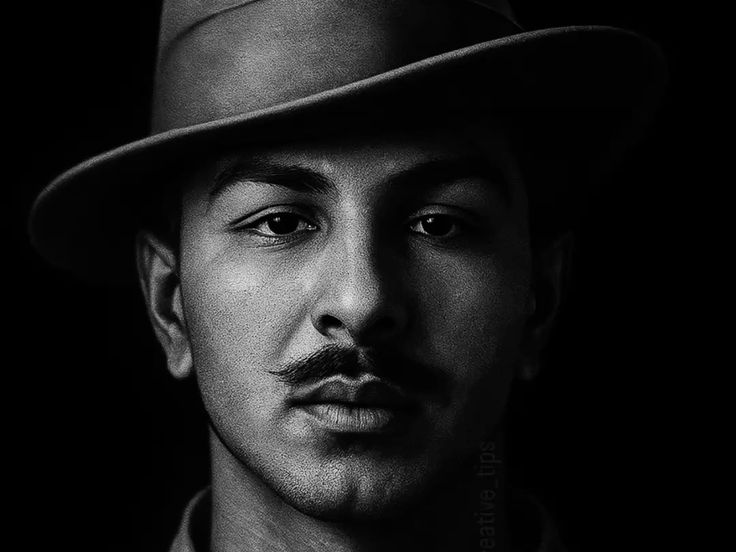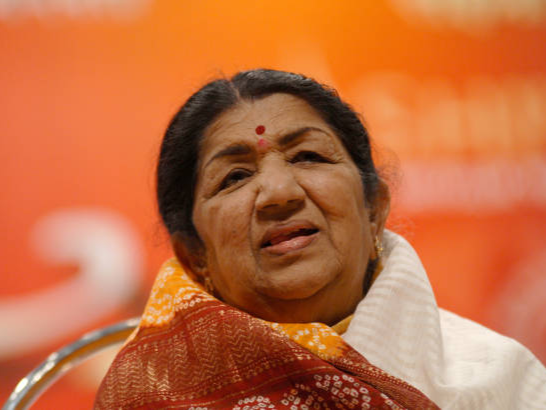So you clicked. Of course you did. Because somewhere between your eighth cup of chai and doom scrolling through Instagram, you realized you actually know embarrassingly little about the guy whose birthday gets you a day off from college. Let me introduce you to Jawaharlal Nehru India’s first Prime Minister, perpetual rose enthusiast, and the OG politician who basically set the template for “started from the top, now we’re here.” Born on November 14, 1889, in Allahabad (now Prayagraj, because why keep things simple), Nehru lived a life so packed with privilege, drama, controversial decisions, and actual historical significance that even a Netflix series couldn’t do it justice. Grab your overpriced Starbucks knockoff because we’re diving deep into the biography of a man who shaped modern India while occasionally faceplanting spectacularly along the way.
The Silver Spoon Was Actually Made of Platinum: Nehru’s Childhood
Let’s get one thing straight: Jawaharlal Nehru didn’t grow up knowing struggle. This man was born into what we’d now call “old money goals.” His dad, Motilal Nehru, was a hotshot lawyer who basically printed cash, and their house Anand Bhavan in Allahabad had a literal swimming pool. In the 1890s. In India. Let that sink in.
The mansion also featured: a tennis court, European governesses, private tutors, and basically everything your average Indian kid could only dream about while sharing a single bedroom with three siblings. Nehru was homeschooled until he was 15, which sounds great until you realize it meant zero friends and a childhood that he himself described as “sheltered and uneventful”. Imagine having everything but also being kinda lonely. Rich people problems, am I right?
His parents shipped him off to Harrow School in England at 15 yes, that Harrow, where the British elite send their kids to learn how to sound condescending in three languages. Then came Trinity College, Cambridge, where he got a degree in natural sciences and apparently learned absolutely nothing useful for running a country later. After Cambridge, he studied law at the Inner Temple in London because what else do rich kids with no clear life plan do?
Here’s the kicker: Nehru returned to India in 1912 as a qualified barrister, started practicing law in Allahabad and by his own admission, absolutely hated it. The man was wandering through life like a Gen Z kid with a liberal arts degree, no direction and family money keeping him afloat. Relatable king, honestly.
From Confused Rich Kid to Freedom Fighter: The Glow Up Nobody Expected
Enter Mahatma Gandhi. In 1916, Nehru met the man who would basically become his life coach, mentor, and the reason he’d spend the next few decades getting arrested. The 1919 Jallianwala Bagh massacre where British troops opened fire on unarmed Indians, killing hundreds flipped a switch in Nehru’s brain. Suddenly, the privileged boy who’d spent his youth in England decided British rule was, in fact, not that cool.
Nehru’s freedom fighter resume included:
- Getting imprisoned nine times by the British (total jail time: over nine years)
- Becoming President of the Indian National Congress in 1929 at age 40
- Drafting the Indian Declaration of Independence because apparently he had a way with words
- Participating in Gandhi’s Salt March in 1930 and promptly getting arrested for six months
Let’s be real spending nearly a decade in British jails sounds terrible, but Nehru used that time to write books. His biography includes literary works like “The Discovery of India,” “Glimpses of World History,” and “Letters from a Father to His Daughter”. The man turned prison time into a writing career. That’s either impressive or the ultimate flex. Probably both.
In 1916, he married Kamala Kaul, and in 1917, they had a daughter named Indira who would grow up to become Prime Minister herself. The Nehru-Gandhi dynasty: because why let democracy interfere with family business? Kamala died in 1936 after a long illness, and Nehru reportedly started wearing a red rose on his lapel in her memory. Or maybe it was because a village girl gave him one and he felt bad. Or maybe he just liked roses. The biography has like three different versions of this story.
August 15, 1947: The Day Nehru Became Everyone’s Problem (In a Good Way?)
At the stroke of midnight on August 15, 1947, while most of the world was asleep, India woke up to independence and Nehru delivered his legendary “Tryst with Destiny” speech. It’s genuinely one of the greatest speeches ever given, full of hope, poetry and the kind of optimism that only comes from not yet knowing how hard governing actually is.
The speech included bangers like: “Long years ago, we made a tryst with destiny, and now the time comes when we shall redeem our pledge” and “At the stroke of the midnight hour, when the world sleeps, India will awake to life and freedom”. Chills. Literal chills. Even now, 77 years later, reading it hits different.
Nehru became India’s first Prime Minister and held the position until his death in 1964 a solid 17 years of running a newly independent nation that was simultaneously celebrating freedom and dealing with Partition-induced trauma, refugee crises, communal violence, and economic devastation. No pressure, right?
The Economic Policies: When Your Uncle Discovers Socialism
Nehru had Opinions™ about economics, and unfortunately for India, he got to implement them. His approach was basically: “What if we controlled everything, built big dams and called it progress?”
Nehru’s economic highlights (lowlights?):
Five-Year Plans: Introduced in 1951, these Soviet-style economic blueprints prioritized heavy industry over, you know, feeding people. The First Plan actually worked because of good harvests. The subsequent ones? Not so much.
License Raj: Created a bureaucratic nightmare where you needed seventeen permits to sneeze. This basically killed entrepreneurship and gave us decades of economic stagnation.
Dams as Temples: Nehru genuinely believed dams were “the temples of modern India”. He built a bunch of them. Some helped with irrigation. Others displaced millions. Fun times.
Rejecting Foreign Investment: Because nothing says “economic growth” like refusing money from people willing to give you money. Nehru was suspicious of foreign investment and preferred state control, which worked about as well as you’d expect.
The results? By the time Nehru died in 1964, India’s share of global exports had dropped from 25% in 1947 to about 9%. Poverty and unemployment were rampant. But hey, at least we had some impressive looking dams and a bloated public sector.
The Foreign Policy: Non Aligned or Just Non Committal?
Nehru pioneered the Non Aligned Movement (NAM), which basically meant India would be friends with everyone and enemies with no one during the Cold War. Sounds great in theory. In practice? Questionable.
The NAM philosophy: Don’t pick sides between the US and USSR, maintain independence, focus on developing nations, and generally act morally superior to everyone. At its peak, NAM had 120 member countries, and Nehru was basically the cool uncle everyone looked up to.
The reality check: While Nehru preached non alignment, India tilted pretty heavily toward the Soviet Union. He criticized American foreign policy constantly while going soft on Soviet aggression. This annoyed the Americans so much that they eventually propped up Pakistan as a counterweight, giving us a nuclear-armed hostile neighbor. Thanks, Chacha.
Nehru also championed newly independent African and Asian nations, which was genuinely noble. But his naivety about China? That came back to bite us. Hard.
The China Disaster: When “Hindi Chini Bhai Bhai” Became “Wait, What Just Happened?”
Oh boy. The 1962 Sino-Indian War is probably the darkest chapter in Nehru’s biography, and it’s a masterclass in how trusting the wrong people can absolutely wreck you.
The timeline of disaster:
Nehru genuinely believed China was India’s friend and that “Hindi Chini Bhai Bhai” (Indians and Chinese are brothers) was a real thing, not just a slogan. He trusted Chinese Premier Zhou Enlai’s assurances that China would never cross the McMahon Line.
In October 1962, China launched a massive invasion across India’s northeastern border, completely blindsiding the Indian government. Indian forces, underprepared and poorly equipped thanks to Defense Minister Krishna Menon’s budget cuts, got absolutely demolished.
Nehru, who had spent years undermining India’s military preparedness because he thought diplomacy would solve everything, had to basically beg US President Kennedy for help. The man who preached non-alignment sent desperate letters asking for American military support. The irony was not lost on anyone.
China declared a unilateral ceasefire in November 1962 after taking all the territory it wanted, and Nehru’s reputation never recovered. The humiliation was so complete that it probably contributed to his death two years later.
The Kashmir Conundrum: That One Decision That Keeps on Giving
Let’s talk about Kashmir the gift that keeps on taking. When Pakistan backed tribal raiders invaded Kashmir in October 1947, Maharaja Hari Singh signed the Instrument of Accession to join India. Nehru sent troops, and Indian forces pushed back the invaders.
Then Nehru made The Decision: Against the advice of Sardar Vallabhbhai Patel and literally everyone with common sense, Nehru took the Kashmir issue to the United Nations in January 1948. The logic? He thought international mediation would resolve it peacefully. Spoiler alert: It didn’t.
Instead, the UN essentially legitimized Pakistan’s claim to the disputed territory and we’re still dealing with this mess 77 years later. Pakistan still controls about one third of Kashmir, terrorism remains a problem, and every few years, tensions escalate into near-wars.
Multiple sources suggest Patel wanted the Indian army to continue operations until all of Kashmir was reclaimed. Nehru overruled him, declared a ceasefire and here we are. Some call it a diplomatic approach. Others call it a colossal strategic blunder that continues to haunt India.
The Controversies: Because No Biography Is Complete Without Messy Bits
Nehru’s 17 year tenure wasn’t all roses (pun intended). Here’s the tea:
The UN Security Council Seat: There’s debate about whether Nehru actually rejected a permanent seat offer for India. Most historians say India was never formally offered one, so there was nothing to reject. But the myth persists because it makes for great political ammunition.
Tibet and China: Nehru basically ignored Tibet’s annexation by China in 1951, thinking it wasn’t India’s problem. This strategic blindness came back to haunt us in 1962.
Economic Mismanagement: His socialist policies, while well intentioned, created a bureaucratic monster that stifled growth for decades. India’s economic liberalization didn’t happen until 1991 to 27 years after his death when we finally realized state control wasn’t working.
Dynastic Politics: While Nehru himself didn’t create a political dynasty on purpose, his daughter Indira became PM, then his grandson Rajiv and now his great grandson Rahul is in politics. The Nehru Gandhi family has dominated Indian politics for generations, which is interesting for a democracy.
The Rose, The Children and Why We Call Him “Chacha”
Despite everything the blunders, the controversies the questionable decisions Nehru genuinely loved children, and they loved him back. Hence “Chacha Nehru” (Uncle Nehru).
Fun Nehru facts:
He always wore a fresh red rose on his lapel. Multiple stories exist about why some say it was in memory of his wife Kamala, others say a village girl gave him one and it became his thing. Whatever the reason, it became his signature look.
He started the Youth Festival in 1958, where students from universities across India could showcase talents. He’d spend hours talking to participants, cutting jokes and taking photos with them.
His birthday, November 14, is celebrated as Children’s Day in India. Because apparently, we decided the best way to honor a politician is to give kids a day off. Not complaining.
The Legacy: Complicated Doesn’t Even Begin to Cover It
Nehru died on May 27, 1964, from a heart attack. He was 74. India had been independent for 16 years, and he’d been Prime Minister for all of them.
What did he actually achieve?
Democracy: He established parliamentary democracy in India and maintained it despite enormous challenges. That’s genuinely impressive.
Institutions: He founded IITs, IIMs, AIIMS and other institutions that still form the backbone of India’s education and research.
Secularism: He promoted a secular, pluralistic vision of India where people of all religions had equal rights.
Non Alignment: Whatever its flaws, NAM gave India an independent voice in global affairs.
But also:
Economic stagnation that lasted decades
The Kashmir mess we’re still dealing with
The 1962 China debacle that exposed India’s military weaknesses
A bureaucratic system that throttled entrepreneurship
Nehru’s biography is basically a case study in contradictions. He was brilliant but naive. Idealistic but impractical. Well-intentioned but sometimes catastrophically wrong. He shaped modern India in ways both profound and problematic and we’re still unpacking his legacy.
Modern India has moved away from many of Nehru’s policies we liberalized the economy, we’ve strengthened our military, we’ve taken a tougher stance on national security. But we still celebrate his birthday, name institutions after him, and argue endlessly about whether he was a visionary or a disaster.
The truth? Probably both. Nehru was deeply human flawed, complicated, sometimes wrong, occasionally brilliant, and undeniably significant. His biography reads like a mix of triumph and tragedy, idealism and naivety, vision and blindness.
Wrapping This Up Before Your Attention Span Dies
So there you have it. Jawaharlal Nehru: rich kid turned freedom fighter turned India’s first Prime Minister, who spent 17 years building a nation while occasionally making decisions that still make us go “Dude, WHAT were you thinking?”
He gave us institutions, democracy, and a Children’s Day holiday. He also gave us economic stagnation, the Kashmir issue and a bureaucratic nightmare. He loved roses, children and writing books in prison. He trusted China way too much and Pakistan way too little (or maybe just the right amount, depending on who you ask).
His biography is messy, contradictory, and impossible to summarize neatly kind of like India itself. We can criticize his mistakes (and we should), but we can’t ignore his contributions either. He was neither the saint his supporters claim nor the disaster his critics suggest. He was just a man privileged, educated, idealistic, flawed who ended up shaping a nation.
Now you know enough about Nehru to sound vaguely intelligent at family dinners when uncles start political debates. You’re welcome. Go forth and enjoy your Children’s Day holiday, knowing it’s named after a guy who wore the same flower every day for decades and thought dams were temples.
And maybe, just maybe, try not to trust geopolitical rivals who claim to be your “bhai” when they’re clearly just waiting to invade. Lessons, people. We learn from history so we don’t repeat it. Or do we? Spoiler: We definitely repeat it.
Congratulations on making it to the end
You either genuinely care about Indian history, you’re procrastinating on something important, or you’re one of those overachievers who actually reads entire blog posts. Either way, you now know more about Nehru than 90% of the people whose schools are named after him. Use this knowledge wisely. Or don’t. I’m not your chacha.










